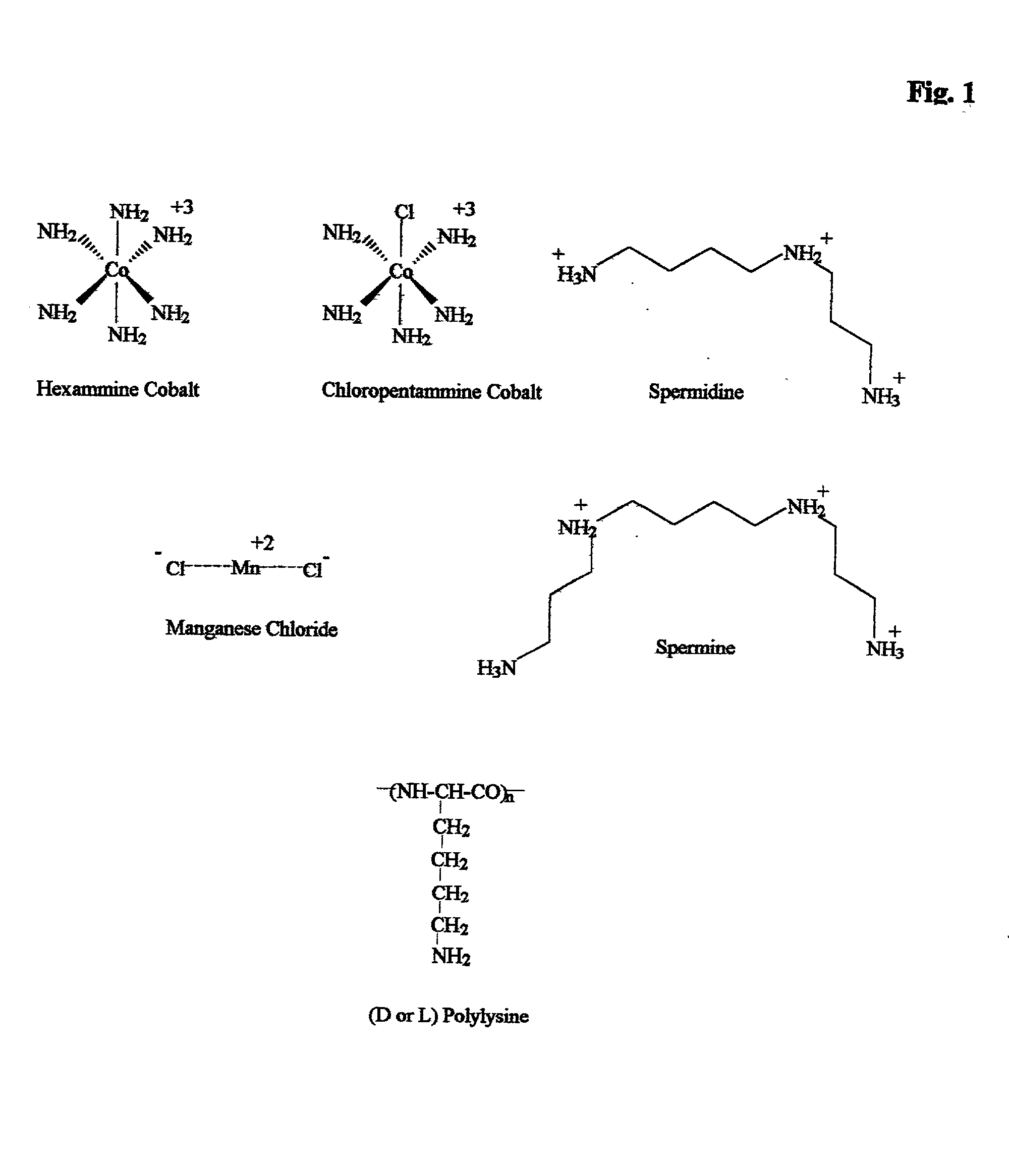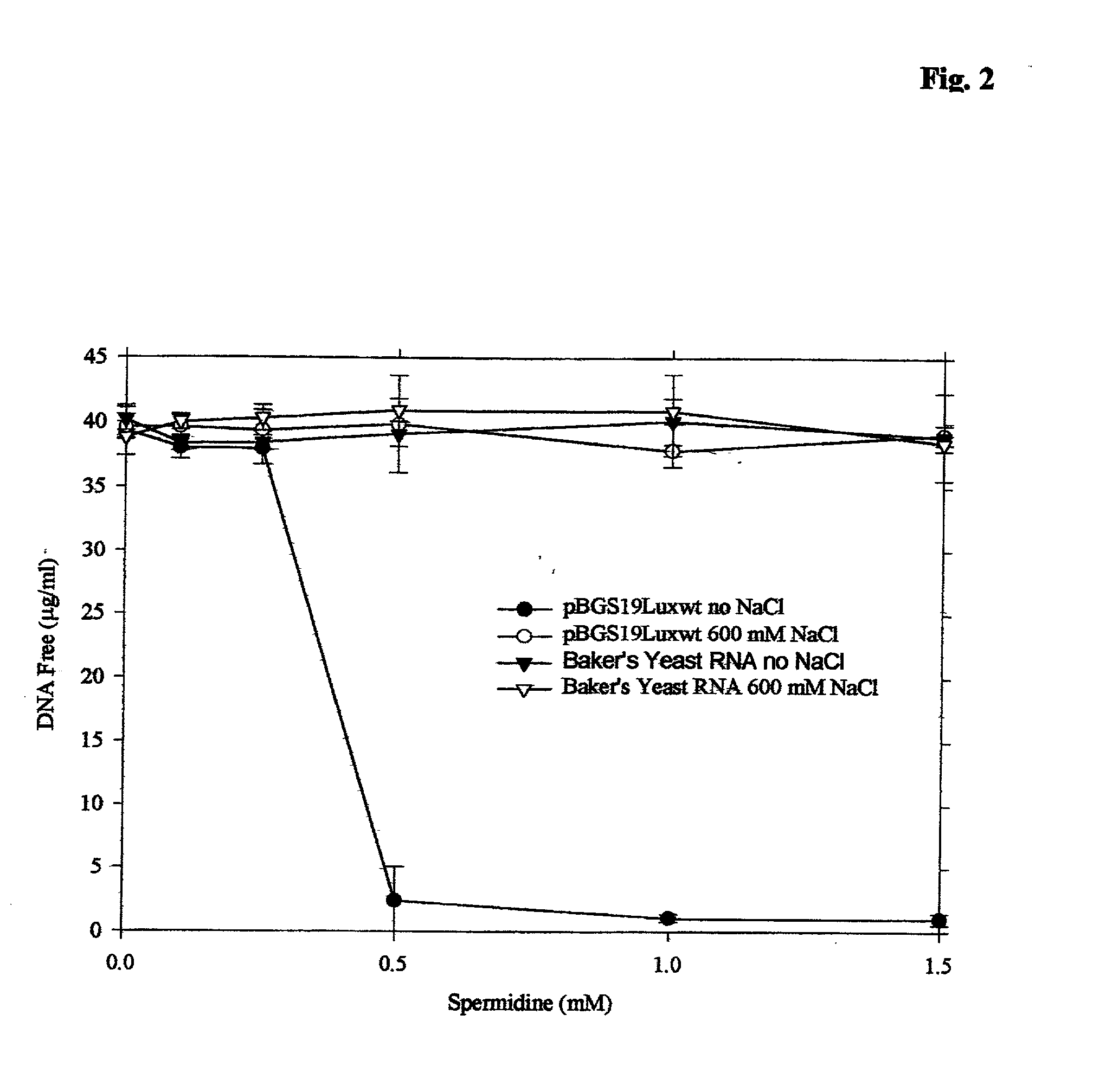Apparatus, methods and compositions for biotechnical separations
a biotechnical and apparatus technology, applied in the field of apparatus, methods and compositions for biotechnical separation, can solve the problems of relately time-consuming and current methods of plasmid separation, and achieve the effects of improving performance, reducing cost and improving efficiency
- Summary
- Abstract
- Description
- Claims
- Application Information
AI Technical Summary
Benefits of technology
Problems solved by technology
Method used
Image
Examples
example 2
Plasmid Mini-prep
[0183] Three mL of LB (1 liter contains 10 g of tryptone, 5g of yeast extract and 10 g of NaCl) medium containing 50 .mu.g / mL kanamycin is inoculated with E. coli JM109 containing the plasmid pBGS19luxwt and grown overnight at 37.degree. C. A 2 mL aliquot of this pipetted into a 2 mL microcentrifuge tube and then centrifuge at 14,000.times. g for 5 minutes to pellet the cells. The cells are then resuspended and lysed by the alkaline lysis method. (see reference 10) 300.mu.l of solution 1 (25 mM Tris Free Base, 10 mM EDTA, 50 mM Dextrose) is added to the pellet and the pellet is resuspended by vortexing. After 300 .mu.l of solution 2 (1% sodium dodecyl sulfate (SDS) and 0.2 N NaOH) are added and the mixture is inverted 3-4 times and placed on ice for 1-2 minutes.
[0184] Next 300 .mu.l of ice-cold solution 3 (which is 600mL of 5 M KAc, 115 mL of glacial acetic acid, and 285 mL of distilled water per liter.) is added and the mixture is inverted 3-4 times and again place...
example 3
Selective Precipitation
[0185] The concept of selective compaction precipitaton is demonstrated by using salmon sperm DNA, pBGS19luxwt (a 6 kB derivative of pUC19 expressing Vibrio harveyi luciferase), and total baker's yeast RNA. Both salmon sperm DNA (not shown) and the plasmid are efficiently precipitated with 0.5 mM spermidine at low ionic strength, but not in 600 mM NaCl. Yeast RNA, in contrast, does not precipitate at either ionic strength, as shown in FIG. 2. As practical applications will usually involve at least a modest ionic strength, the concentration spermidine required to precipitate plasmid DNA in the presence of 100 mM NaCl is measured and found to be 5-10 mM spermidine.
example 4
Tetravalent Spermine
[0186] In other experiments conducted according to Example 3, plasmid DNA is precipitated in the presence of up to 200 mM NaCl substituting 10 mM of the (more potent) tetravalent spermine for spermidine. However, the spermine has two major draw backs: it is not as selective for DNA over RNA as spermidine so some RNA contamination can be present and spermine is difficult to completely remove from nucleic acids and will interfere with some later applications such as restriction enzyme digestion. Spermidine does not have these problem, thus it is our most preferred compaction agent for DNA applications.
PUM
| Property | Measurement | Unit |
|---|---|---|
| Percent by mass | aaaaa | aaaaa |
| Molar density | aaaaa | aaaaa |
| Volume | aaaaa | aaaaa |
Abstract
Description
Claims
Application Information
 Login to View More
Login to View More - R&D
- Intellectual Property
- Life Sciences
- Materials
- Tech Scout
- Unparalleled Data Quality
- Higher Quality Content
- 60% Fewer Hallucinations
Browse by: Latest US Patents, China's latest patents, Technical Efficacy Thesaurus, Application Domain, Technology Topic, Popular Technical Reports.
© 2025 PatSnap. All rights reserved.Legal|Privacy policy|Modern Slavery Act Transparency Statement|Sitemap|About US| Contact US: help@patsnap.com



